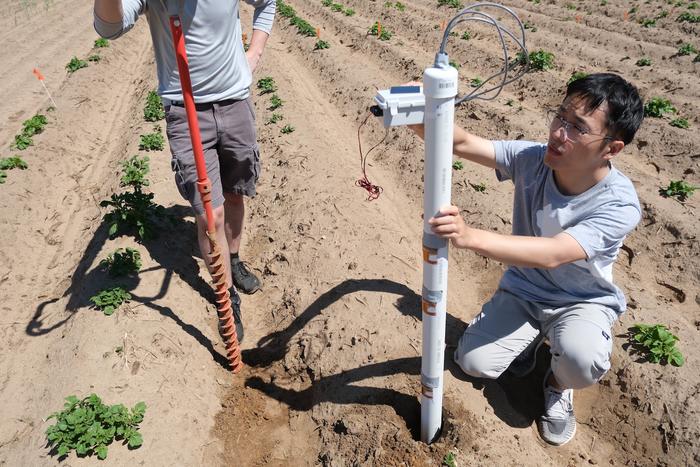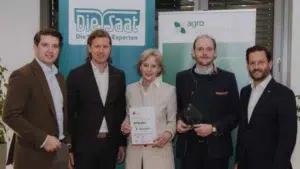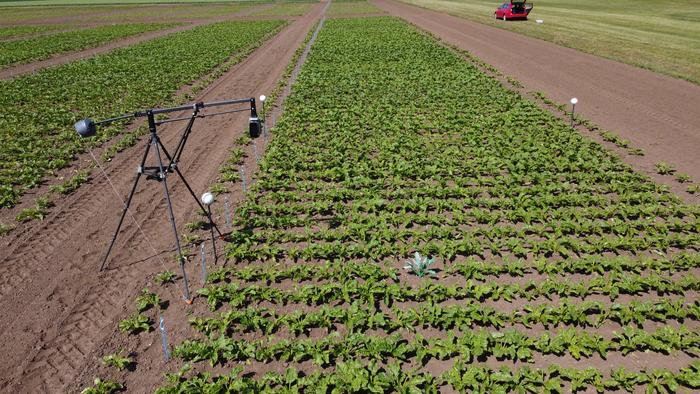The TERRA project proves how collaboration can lead to great things.
WHAT’s HAPPENING ON a one-acre plot in Arizona is on track to transform the world of plant
science, ushering in a new era of advanced crop analytics. The TERRA (Transportation Energy Resources from Renewable Agriculture) project seeks to develop improved varieties of energy sorghum for biofuel use while creating enhanced crop phenotyping methods.
In the fall of 2015, the TERRA-REF team received an $8 million grant from the U.S. Department of Energy for the collaborative effort between the Donald Danforth Plant Science Center, University of Arizona, United States Department of Agriculture’s Arid Land Agricultural Research Center, University of Illinois, National Center for Supercomputing Applications, Kansas State University and Washington University at St. Louis.
“Our goal is to fundamentally transform breeding by making more information available about how plants grow,” says David LeBauer, a University of Illinois researcher who leads the TERRA-REF Computing Pipeline Development Team. “By measuring traits that improve yield potential and stress tolerance with high precision and frequency, we will have more power to discover the underlying genes that will transform breeding.”
The TERRA-REF team is creating a public dataset for sorghum phenotypes by deploying a suite of modern sensors on a large field scanner in Arizona. The scanner covers one acre and is built into the ground. It carries a large number of heavy sensors and measures plants with unprecedented precision, LeBauer says.
Those sensors include high resolution cameras that measure visible, ultraviolet and near-infrared wavelengths, leaf and soil temperatures, and capture the three-dimensional images of plant structure. A project of this scope has had its challenges.
“We did not initially appreciate how much work would be required to operate a sensor suite every day at high precision,” LeBauer says. “Even though we are using commercial sensors, these sensors collect 100 to 1,000 times more data at higher frequency than drones or greenhouse phenotyping platforms.”
Before the data could be processed, researchers had to create a pipeline that ferried that large amount of data from the field in Arizona to supercomputers in Illinois, and then develop the calibration and validation protocols required before analyses could begin
“Many of these challenges could not have been identified in advance, and reflect how ambitious it is to bring together experts from so many different fields of science and engineering,” he says.
The project is in its initial preview data release, giving scientists, engineers and plant breeders a chance to provide feedback on which data products are most useful and which formats are easiest to use. “We will revise these before the beta release in November 2017, and by November 2018, we will have a fully public reference dataset,” LeBauer says. “At the time of public release, our pipeline will process the terabytes of data the field scanner can collect each day and make it available within two days of collection.”
In addition to collecting reference data, researchers are evaluating the tools to determine what’s most effective and how that technology can be used with
equipment such as drones, robots and tractors. Although the project is ongoing, their work has already resulted in a farm-level product that can deliver
many of the same data benefits to individual growers.
PheNode is an in-field sensor suite with built-in environmental sensors and a phenotyping station. Eric Lyons, a University of Arizona assistant professor who leads the CyVerse project for advanced scientific computing, applauds the TERRA-REF group for what they’ve accomplished to date. “For a project of this scale that is just completing its first year of operations, it is impressive to see how quickly they have started generating and distributing data,” he says.













